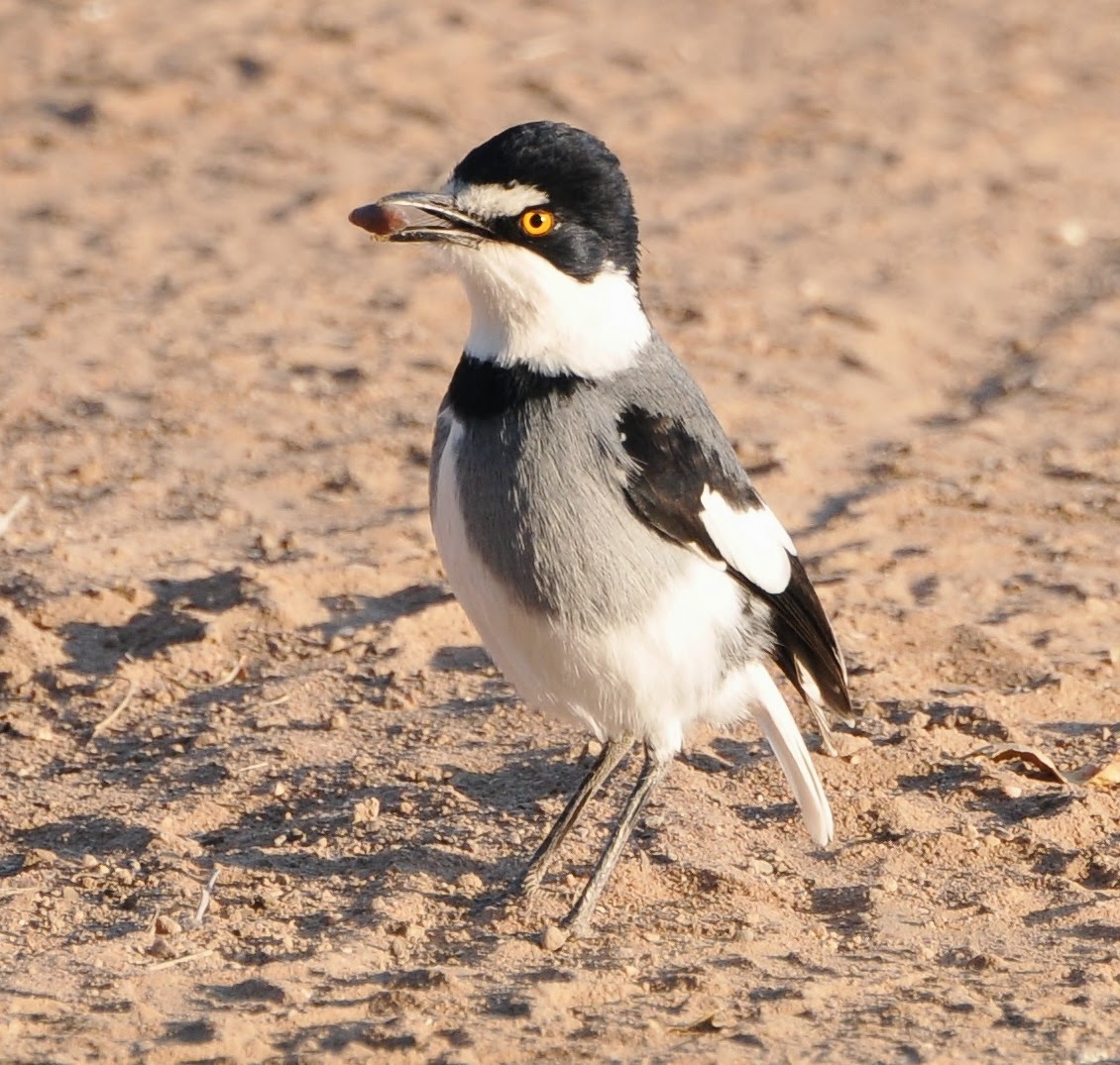 |
| Photo by Paul Bourdin (A Birder in the Philippines) |
Common name:
white-tailed shrike (en); picanço-palrador (pt); lanielle à queue blanche (fr); laniotordo (es); drosselwürger (de)
Taxonomy:
Order Passeriformes
Family Platysteiridae
Range:
This African species is found in south-western Angola and in north-western and central Namibia.
Size:
These birds are 14-15 cm long and weigh 25-45 g.
Habitat:
The white-tailed shrike is mostly found in dry savannas, particularly mopane Colosphermum mopane, and mixed Acacia, cluster-leafs Terminalia and bushwillow Combretum woodlands. They also use dry savannas, rocky areas, and rivers and streams.
Diet:
They mainly hunt large insects, namely moths, butterflies and caterpillars, stick insects, ant lions, mantids, beetles, grasshoppers and termite alates, as well as spiders.
Breeding:
White-tailed shrikes can breed all year round, but with a peak in November-March. The nest is a shallow cup of woven twigs and rootlets, usually placed in scrub about 2-3 metres above ground. The female lays 2-3 pale green eggs with reddish-brown spots, which are incubated by both sexes for about 15 days. There is no available information regarding the fledgling period.
Conservation:
IUCN status – LC (Least Concern)
This species has a large breeding range and is described as common. The population is suspected to be expanding in the east of its range following desertification.







